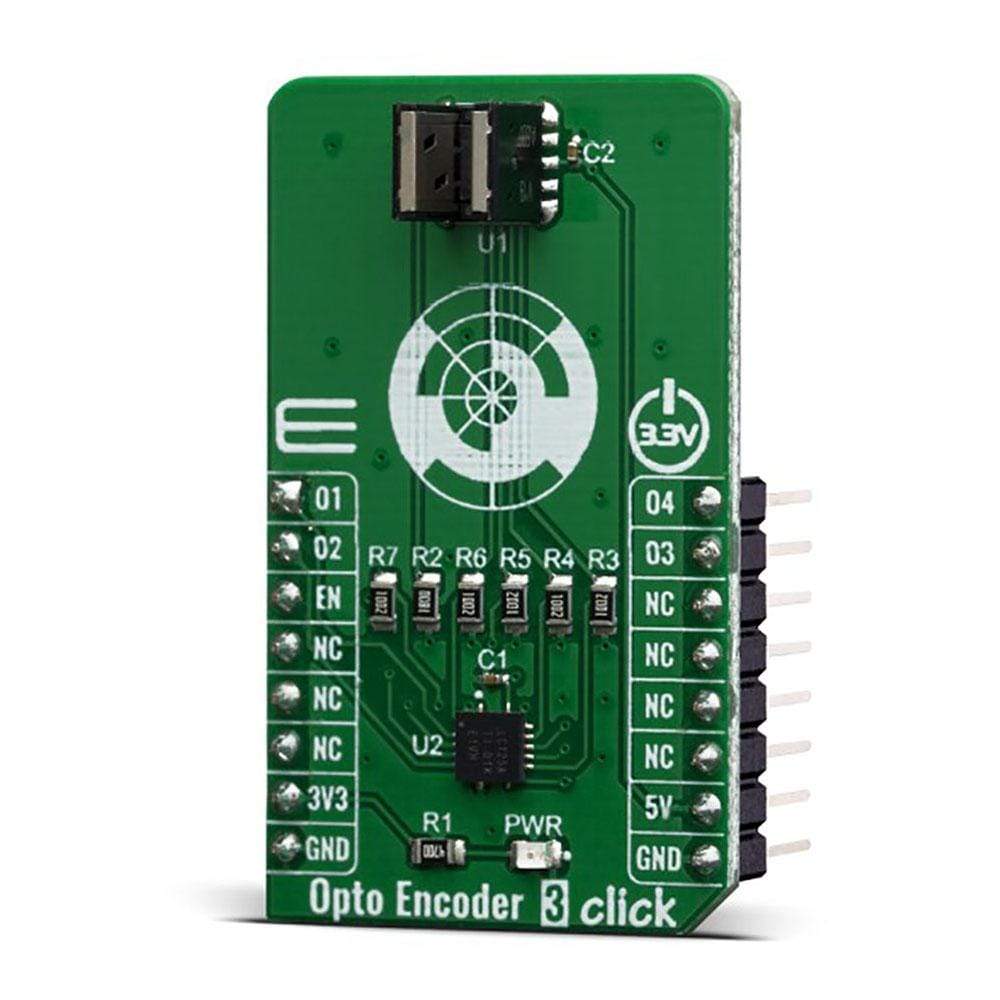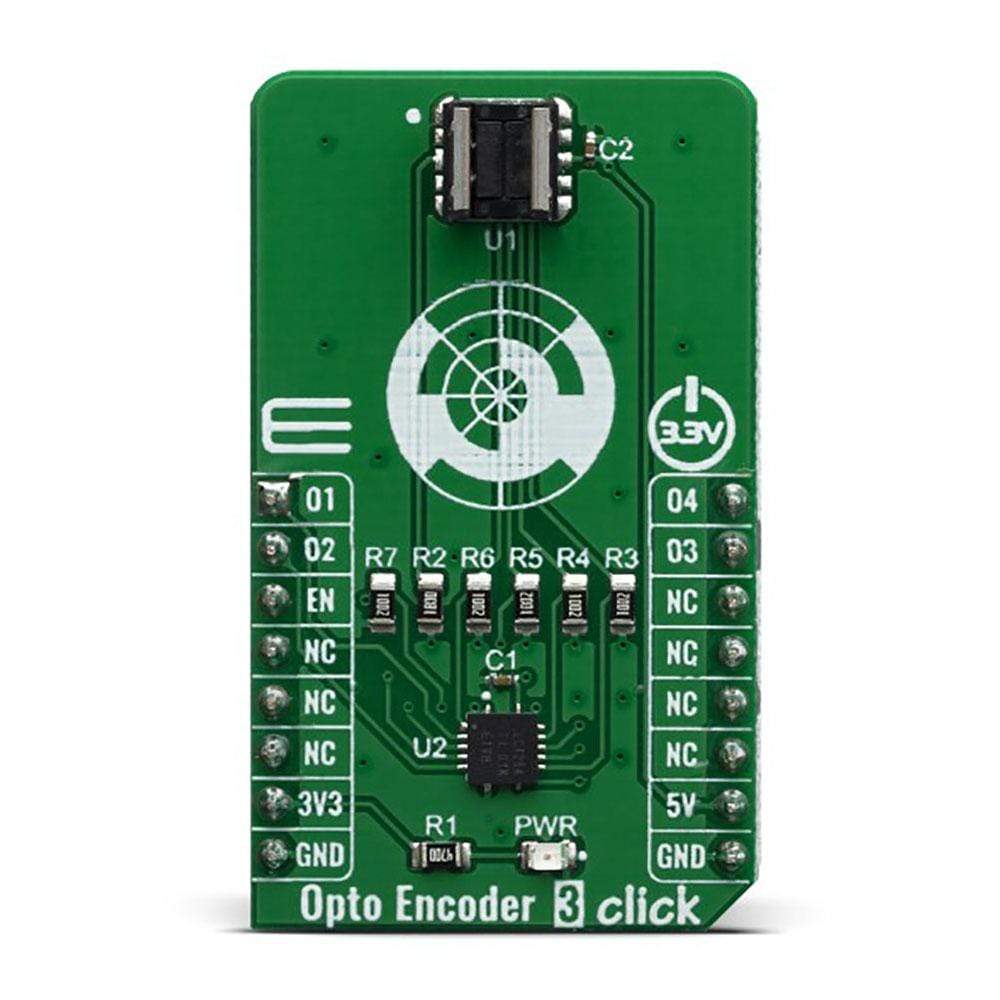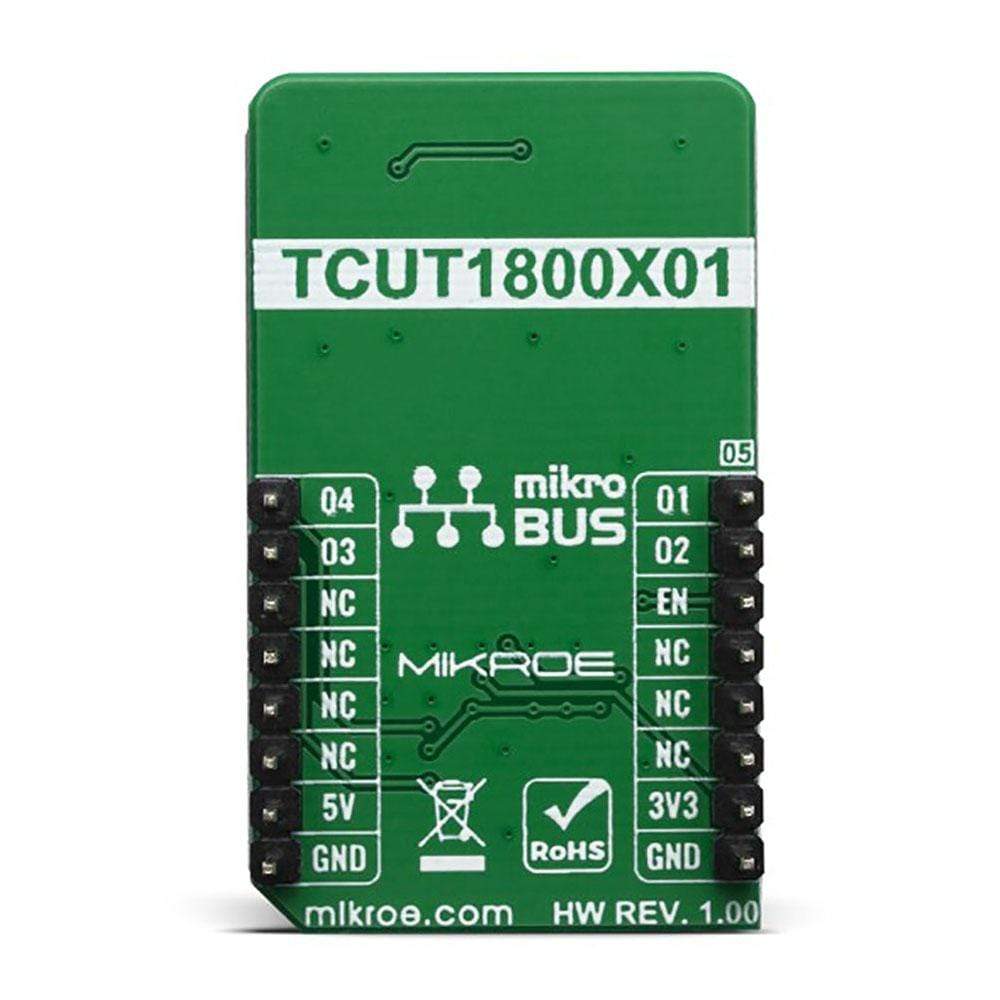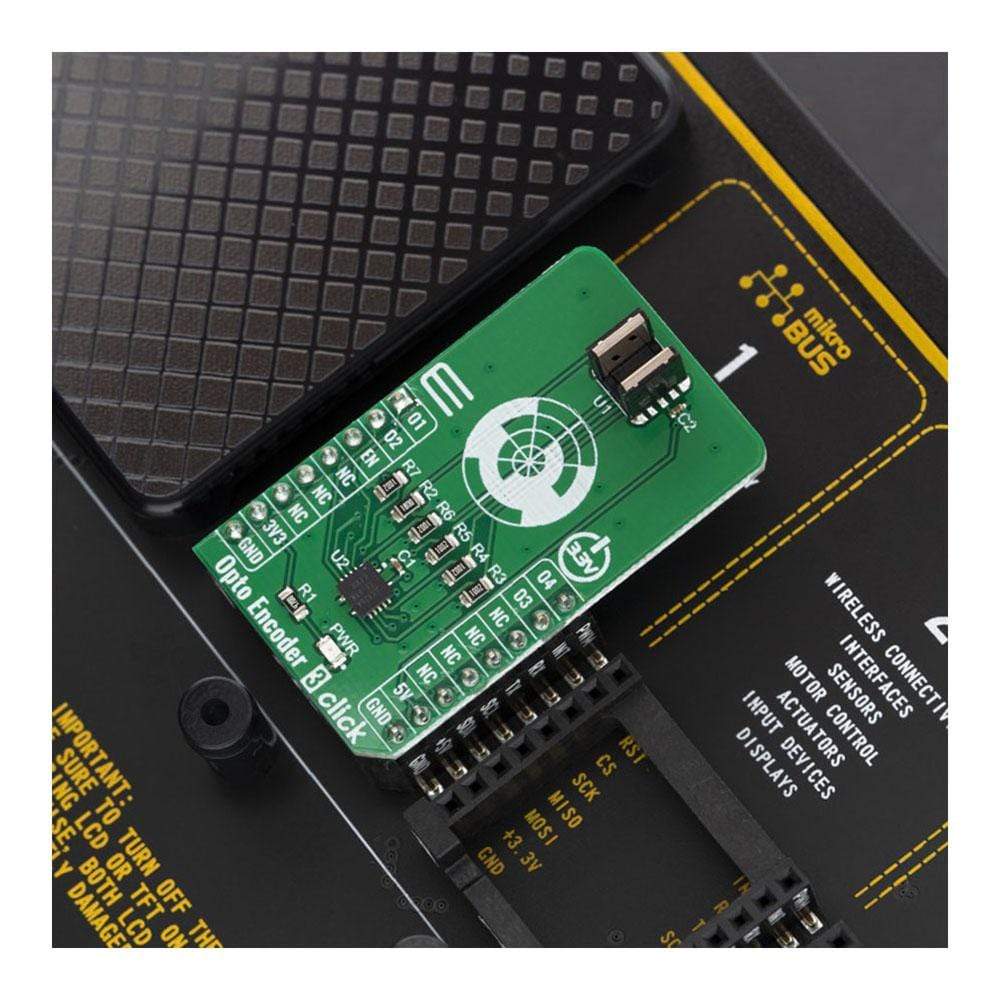



Overview
The Opto Encoder 3 Click Board™ is a linear incremental optical sensor/encoder click, which can be used for the movement or rotation encoding. The TCUT1800X01 sensor is equipped with one infrared LED with a wavelength of 950nm and four phototransistors. Encoders of this type are widely used for many applications which involve precise detection of the position, speed, or rotational angle of an object. Rotary encoders are often used for various types of controllers on many different devices.
Whether it be a rotary encoder knob controller or a rotary encoder on a motor shaft, the principle is the same - it includes an optical sensor, just like the one found on Opto Encoder 3 Click Board™.
Downloads
Das Opto Encoder 3 Click Board™ ist ein linearer inkrementeller optischer Sensor/Encoder-Click, der zur Bewegungs- oder Rotationskodierung verwendet werden kann. Der TCUT1800X01-Sensor ist mit einer Infrarot-LED mit einer Wellenlänge von 950 nm und vier Fototransistoren ausgestattet. Encoder dieser Art werden häufig für viele Anwendungen verwendet, bei denen es um die präzise Erkennung der Position, Geschwindigkeit oder des Drehwinkels eines Objekts geht. Drehgeber werden häufig für verschiedene Arten von Steuerungen auf vielen verschiedenen Geräten verwendet.
Ob es sich um einen Drehgeber-Knopf-Controller oder einen Drehgeber auf einer Motorwelle handelt, das Prinzip ist dasselbe – es enthält einen optischen Sensor, genau wie der, der auf dem Opto Encoder 3 Click Board™ zu finden ist.
| General Information | |
|---|---|
Part Number (SKU) |
MIKROE-3710
|
Manufacturer |
|
| Physical and Mechanical | |
Weight |
0.016 kg
|
| Other | |
Country of Origin |
|
HS Code Customs Tariff code
|
|
EAN |
8606018716685
|
Warranty |
|
Frequently Asked Questions
Have a Question?
Be the first to ask a question about this.




